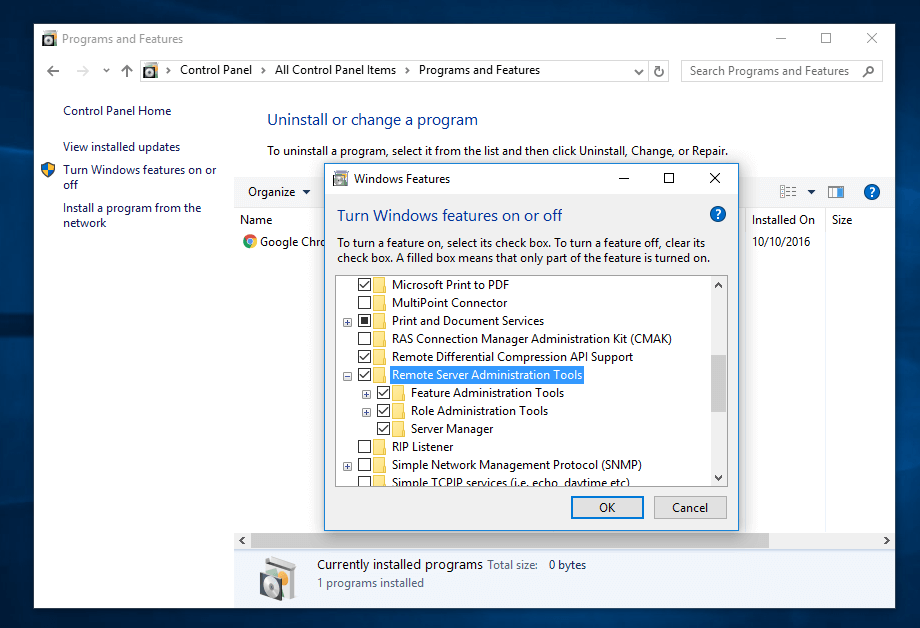
- How to access rsat tools windows 10 how to#
- How to access rsat tools windows 10 update#
- How to access rsat tools windows 10 full#
- How to access rsat tools windows 10 for windows 10#
- How to access rsat tools windows 10 password#
Please follow us to fix the issue and reply your question quickly. We answer your questions related to remote administrative tools from the comment section.
How to access rsat tools windows 10 update#
How to access rsat tools windows 10 for windows 10#
To uninstall Remote Server Administration Tools for Windows 10
How to access rsat tools windows 10 how to#
How to access rsat tools windows 10 full#
You can install Remote Server Administration Tools for Windows 10 only on the full release of Windows 10 Professional or Windows 10 Enterprise.

install Remote Server Administration Tools on Windows 10 Windows 10 – Install Remote Server Administration Tools on Windows 10įirst of all download the Windows remote server administration tools for this link. If you want to install RSAT on Windows 8.1, read the article of Install RSAT on Windows 8.1. The RSAT includes Server Manager, Microsoft Management Console (MMC) snap-ins, consoles, Windows PowerShell cmdlets and providers, and command-line tools for managing roles and features that run on Windows Server. From here you’re free to use MMC as you would anywhere else by adding snap-in objects such as DHCP, DNS or AD DS.It’s a short guide to install Remote Server administration tools for Windows 10.
How to access rsat tools windows 10 password#
The script will prompt you for a password for your domain user and will then launch the MMC application. Make sure when calling this script you right click on it and choose Run as Administrator. The domain controller (DC) name can usually be set to the domain name if only one DC is in off You will need to fill in the sections contained in. Add the following lines to the file and save it. TXT (text) document to edit the contents and then later rename the file to have the. BAT (batch) file on your desktop and right click on it to edit the contents. You can then select the roles that your remote server utilizes such as DHCP, DNS, or Active Directory (AD DS and AD LDS Tools).


The root folder is the Remote Server Administration Tools and most of the interesting bits for this are found in Role Administration Tools. You will then see a list of features you can (un)install. From there you can access the Turn Windows Features on or off area. Step #2Īfter installation, you will need to go to the Control Panel and navigate to the Programs and Features section. Step #1ĭownload and install RSAT from Microsoft by browsing to the Microsoft Download Center and grabbing the version of RSAT that is compatible with your workstation. Typically you need to be a member of the domain you wish to manage servers on but there are a few command line options to help work around this limitation. These tools become incredibly useful when working with Microsoft Server 2008 R2 Core servers as they do not provide a GUI for tasks such as Active Directory management or DNS/DHCP management. The Microsoft Remote Server Administration Tools (RSAT) package allows administrators to utilize the Microsoft Management Console (MMC) to manage Windows Server 2008 R2 remotely.


 0 kommentar(er)
0 kommentar(er)
